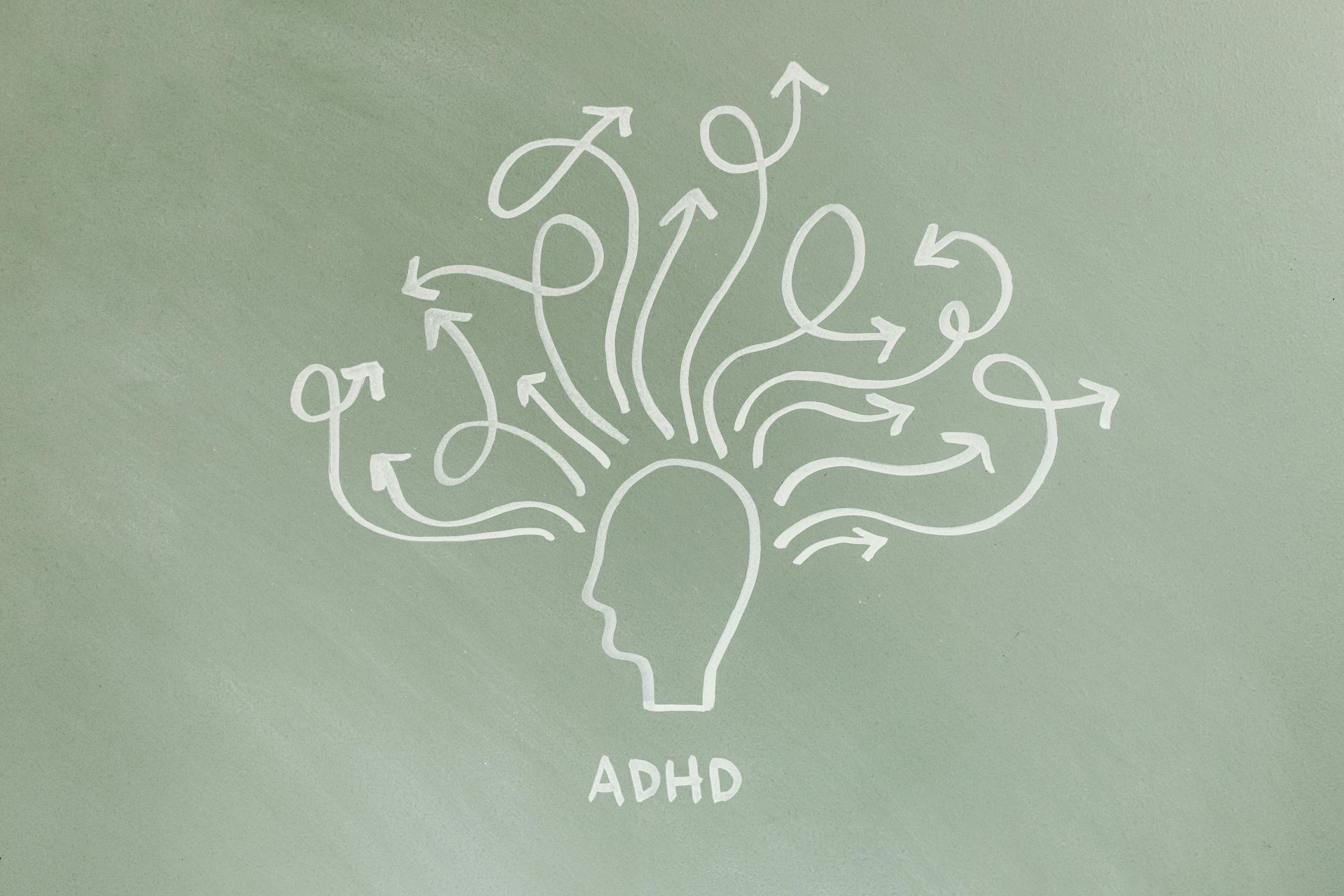Strategies For Your Mental Tool Box
Behavior Support involves strategies and interventions designed to help individuals manage and modify their behaviors to improve their quality of life. These supports are crucial in therapy as they provide practical tools and techniques that clients can apply in their daily lives.
Importance of Practicing Behavior Support:
- Improves Coping Skills: Helps clients develop effective ways to deal with stress and challenges.
- Enhances Self-Efficacy: Builds confidence in clients' ability to manage their problems.
- Promotes Positive Change: Encourages healthier behavior patterns and lifestyle choices.
- Supports Long-Term Growth: Provides a foundation for continuous personal development and resilience.
Common Problems and Tools to Help
- Parenting
- Definition: The process of raising and educating a child from birth to adulthood, involving physical, emotional, social, and intellectual development.
- Example: A parent struggling with their teenager's defiance and failing grades, unsure how to enforce rules and provide support.
- Behavior Support Strategies:
- Consistent Routine: Establishing and maintaining daily routines to provide stability.
- Positive Reinforcement: Rewarding good behavior to encourage its recurrence.
- Effective Communication: Practicing active listening and empathetic responses to foster open dialogue.
- Self-Practice Skill: Daily Reflection Journal - At the end of each day, write down what went well and areas for improvement in your parenting approach.
2. Anxiety
- Definition: A feeling of worry, nervousness, or unease, typically about an imminent event or something with an uncertain outcome.
- Example: A college student feeling overwhelmed with exams, experiencing panic attacks, and struggling to concentrate.
- Behavior Support Strategies:
- Mindfulness Techniques: Practicing meditation and breathing exercises to manage stress.
- Cognitive Behavioral Therapy (CBT): Identifying and challenging negative thought patterns.
- Gradual Exposure: Slowly confronting anxiety-provoking situations in a controlled manner.
- Self-Practice Skill: Deep Breathing Exercises - Spend a few minutes each day practicing deep breathing to calm your mind and body.
3. ADHD (Attention-Deficit/Hyperactivity Disorder)
- Definition: A neurodevelopmental disorder characterized by a persistent pattern of inattention, hyperactivity, and impulsivity.
- Example: A child who struggles to sit still in class, frequently interrupts others, and forgets homework assignments.
- Behavior Support Strategies:
- Behavioral Modification: Using rewards and consequences to improve behavior.
- Organizational Tools: Implementing planners, lists, and reminders to manage tasks.
- Scheduled Breaks: Allowing for short, frequent breaks to maintain focus and reduce restlessness.
- Self-Practice Skill: Task Lists - Create and use daily to-do lists to keep track of tasks and manage time effectively.
4. Adult ADHD
- Definition: ADHD symptoms persisting into adulthood, affecting daily functioning and task management.
- Example: An adult who frequently misses deadlines at work, struggles with time management, and feels overwhelmed by routine tasks.
- Behavior Support Strategies: Time Management: Utilizing tools like calendars and alarms to structure the day.
- Mindfulness Practices: Reducing impulsivity and improving concentration through meditation.
- Cognitive Behavioral Therapy (CBT): Addressing negative thoughts and behaviors related to ADHD.
- Self-Practice Skill: Daily Planner - Use a planner to schedule tasks, set reminders, and keep organized.
5. ADD (Attention Deficit Disorder)
- Definition: A subtype of ADHD characterized primarily by inattention and distractibility without significant hyperactivity.
- Example: A student who struggles to follow along in lectures, easily loses focus, and has trouble completing assignments on time.
- Behavior Support Strategies:
- Task Chunking: Breaking tasks into smaller, manageable steps.
- Environmental Adjustments: Minimizing distractions in work or study areas.
- Consistent Routine: Establishing regular schedules to enhance focus.
- Self-Practice Skill: Pomodoro Technique - Use a timer to work in focused intervals with breaks in between.
6. Grief
- Definition: Deep sorrow, especially caused by someone's death or other significant loss.
- Example: An individual mourning the loss of a loved one, finding it difficult to cope with daily life and feeling constant sadness.
- Behavior Support Strategies:
- Journaling: Expressing feelings through writing.
- Support Groups: Connecting with others who are experiencing similar losses.
- Mindfulness and Relaxation Techniques: Managing stress and emotions through meditation and breathing exercises.
- Self-Practice Skill: Gratitude Journal - Write daily entries focusing on positive memories and things you are grateful for.
7. Bullying
- Definition: Repeated aggressive behavior intended to hurt another individual, physically, mentally, or emotionally.
- Example: A teenager being harassed at school, leading to withdrawal from social activities and declining academic performance.
- Behavior Support Strategies:
- Assertiveness Training: Teaching clients to stand up for themselves in a positive manner.
- Building Self-Esteem: Activities and affirmations that reinforce self-worth.
- Social Skills Training: Developing effective communication and relationship-building skills.
- Self-Practice Skill: Positive Affirmations - Practice daily affirmations to build self-esteem and confidence.
8. Social Media Bullying
Definition: Use of electronic communication to bully a person, typically by sending messages of an intimidating or threatening nature.
Example: A young adult receiving hurtful messages and comments online, causing anxiety and fear of social interactions.
Behavior Support Strategies:
Digital Literacy Education: Teaching safe and responsible use of social media.
Blocking and Reporting Tools: Encouraging the use of platform-specific tools to manage bullying.
Emotional Regulation: Techniques to manage the emotional impact of online interactions.
Self-Practice Skill: Digital Detox - Take regular breaks from social media to reduce exposure to negative interactions.
9. Communication Issues
- Definition: Difficulties in exchanging information, ideas, or feelings, often leading to misunderstandings and conflicts.
- Example: A couple struggling to communicate effectively, resulting in frequent arguments and feelings of being misunderstood.
- Behavior Support Strategies:
- Active Listening: Focusing fully on the speaker and understanding their message.
- Nonverbal Communication Skills: Awareness and control of body language, facial expressions, and tone.
- Conflict Resolution Training: Techniques to manage and resolve disagreements constructively.
- Self-Practice Skill: Reflective Listening - Practice repeating back what the other person says to ensure understanding.
10. Career Stress
- Definition: Anxiety and pressure related to job performance, career advancement, or work-life balance.
- Example: An employee feeling overwhelmed by job demands, worried about job security, and struggling to balance work and personal life.
- Behavior Support Strategies:
- Time Management Techniques: Prioritizing tasks and managing workload effectively.
- Work-Life Balance Strategies: Setting boundaries to ensure personal time.
- Stress Reduction Techniques: Incorporating relaxation practices like deep breathing and meditation.
- Self-Practice Skill: Weekly Review - Set aside time each week to review and adjust your work schedule and personal goals.
Our Team will be happy to help you practice these and other strategies along your journey,















